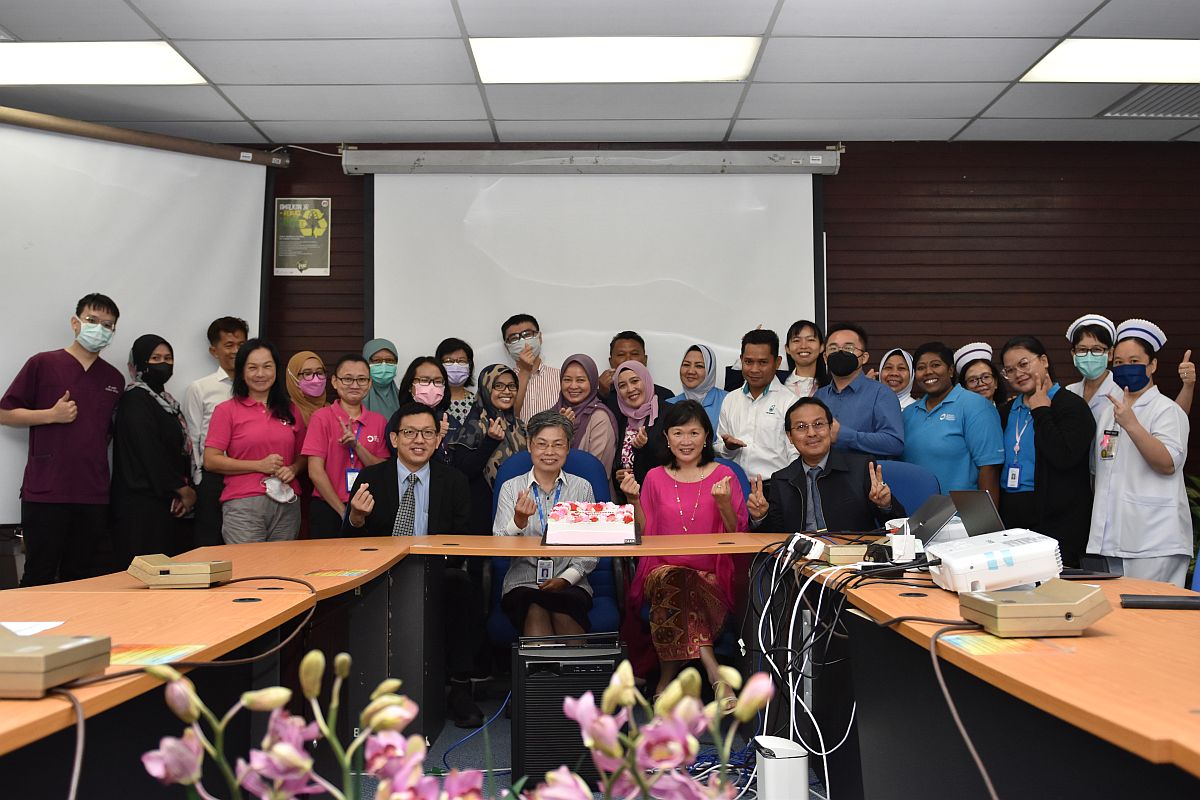KOTA KINABALU, March 22 – Did you know that nine out of 10 breast cancer patients from high-income settings survive the disease, whereas only five out of 10 low-income patients do?
The Ministry of Health (MOH) and Cancer Research Malaysia (CRMY) recently published the results of their joint efforts on improving survival among low-income patients through the Patient Navigation Programme at four public hospitals in Klang, Seremban, Kuching, and Kota Kinabalu.
“Today, breast cancer is one of the most curable cancers, but sadly, improvements in survival have made a greater impact among high-income women and less impact on low-income patients.
“Through our partnership with CRMY, we have addressed this gap through the patient navigation programme with marked improvements in timeliness of diagnosis and treatment, and improvement in adherence to treatment,” said Dr Imi Sairi, National Head of Service, Breast and Endocrine Surgery, MOH lead for Breast Cancer Patient Navigation, and Head of Breast and Endocrine Surgery at HPRZII (Hospital Raja Perempuan Zainab II), Kota Bahru.
Dr Yatela Zainal Abidin, Chief Executive Officer of Yayasan Sime Darby (YSD) is proud to assist CRMY and MOH to set up the very first Patient Navigation Programme Centre at Hospital Tengku Ampuan Rahimah in Klang, significantly enhancing access to cancer care for the B40 community.
“Our more than a decade-long partnership with CRMY contributes towards our commitment to improving health care, particularly for Malaysia’s low-income group.
“We are delighted that our support for CRMY’s research work to address the unique health care challenges faced by Asians has resulted in new services for low-income women through the Breast Cancer Patient Navigation Programme.
“It is our ongoing mission to ensure that equitable access to cancer treatment is made available to all Malaysians,” she said.
Shariah Nelly Francis, Chief Executive Officer of Yayasan Petronas, emphasised the importance of having an all-of-society inclusive approach to health care, as the basis for the support from Yayasan Petronas for the expansion of the programme beyond these four centres.
“To date, Yayasan Petronas’s contribution comprises the expansion of patient navigation to ensure wider coverage and access to the B40 communities, and research operational costs and expenses,” said Shariah.
There are more than 2.3 million cases of breast cancer that occur each year, making it the most common cancer among adults.
In 95 per cent of countries, breast cancer is the first or second leading cause of female cancer deaths.
Yet, survival from breast cancer is widely inequitable between and within countries; nearly 80 per cent of deaths from breast and cervical cancer occur in low- and middle-income countries.
Although Malaysia is an upper middle-income country with a strong health care system and good socioeconomic programmes, cancer survival rates in Malaysia are still below the average rate of high-income countries.
This is due to a variety of barriers such as low cancer awareness and screening rates, delays in seeking medical attention, late detection and diagnosis, challenges in access to quality, and affordable care and belief in alternative treatment.
The first demonstration model for the Breast Cancer Patient Navigation Programme (PNP) was estbalished at Hospital Tengku Ampuan Rahimah in 2015, with the goal of delivering patient-centred care for breast cancer patients, by guiding the newly diagnosed to complete recommended lifesaving treatment and overcoming barriers that could interrupt their treatment.
Following the successful demonstration of the programme, it was then replicated in 2020 at three other state referral hospital that treats breast cancer patients, namely Hospital Queen Elizabeth II, Kota Kinabalu, Hospital Umum Sarawak, Kuching, and Hospital Tuanku Ja’afar, Seremban.
In the past nine years, 3,991 newly diagnosed breast cancer patients have been navigated through the four centres.
Through the Patient Navigation Programme, there has been an improvement in the timeliness of diagnosis, initiation of treatment, and decrease in defaulter rate.
The one-stop centre also offers emotional, financial, and transportation support, which means breast cancer patients have faced fewer barriers to care, with a higher proportion completing treatment.
Health Director General Dr Muhammad Radzi highlighted the importance of such initiatives, which are in line with the World Health Organization’s (WHO) Global Breast Cancer Initiative Framework.
“The global target is to save 2.5 million lives from breast cancer by 2040, and the WHO Framework recommends countries implement the three pillars of health promotion for early detection, timely diagnosis, and comprehensive management of breast cancer.
“The Patient Navigation Programme here in Malaysia has already hit two targets: first, ensuring patients are diagnosed within 60 days of initial presentation and that treatment starts within three months of first presentation, and secondly, ensuring at least 80 per cent of patients complete their recommended treatment.
“The MOH is committed to continuing to work with CRMY in ensuring at least 60 per cent of breast cancers are diagnosed and treated as early-stage disease. These ambitious programmes will require dedicated effort and support to become reality,” he said.
“Although we have improved timeliness and adherence to treatment, there is still a lot more to do. The focus in the coming years is to expand our partnership to drive early detection of breast cancer.
“To do this, we have already started programmes to reach out to general practitioners to ensure rapid referral for women with suspicious symptoms (such as a breast lump) and to reach out to rural and underserved communities to improve health-seeking behaviour,” said Prof Dr Teo Soo Hwang, CRMY Chief Scientific Officer and one of the founders of the programme.
“Through these initiatives, we hope that more cancer patients will present with the early-stage disease when the cancer is more likely to be cured.”












